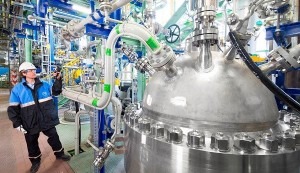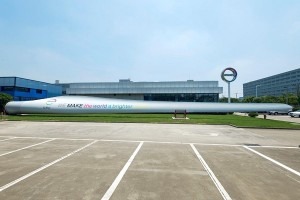A range of new process and product developments show that Bayer polymers spin-out Covestro is still a major force in the world of elastomers. Patrick Raleigh reports
Independent from Bayer since 2015, Leverkusen, Germany-based Covestro is a €12-billion turnover polymer supplier focused mainly on polycarbonates and polyurethanes. The latter business is a big – it won’t say how big – supplier of urethane-based elastomeric materials.
And while the Bayer’s synthetic rubber business has been spun off into Lanxess and then Arlanxeo, Covestro has also kept firmly in touch with elastomer-technology roots developed over decades within its former parent group.
The German company has so far established a four kilotonne-per-annum (ktpa) plant for the manufacture of the CO2-based polyol feedstock for flexible polyurethane foams, with a commercial-scale facility envisaged within the next five years.
Market acceptance
The progress of this plan now depends largely on market acceptance and adoption of the materials technology by processors and suppliers of these materials, made by reacting the polyol with toluene diisocyanate (TDI).
“We are at that important stage now: putting 4,000 tonnes into the market going into mattresses, car seats. Confidence in making a CO2-based product has got to be built, and then the confidence to invest in 100ktpa.”
The CO2 process technology, explained Thomas, involves using some of the reaction energy from conventionally used propylene oxide (PO) to activate CO2 as a source of carbon links in the polyol.
“The epoxide chemistry for making the polyol is perfect for CO2 as an alternative to propylene oxide. We are substituting PO, which is expensive and highly capital-intensive,” said the Covestro boss, noting that a standard PO plant can cost around €1.5 billion to build.
CO2 – a potent greenhouse gas if released into the atmosphere – could be sourced for little or no cost from the industry, the Covestro boss further suggested.
“This is a totally competitive process because 20% of the feedstock comes for free,” he continued. “The chemistry suggests we could get to around 40% and we are building to that as a target.”
Another option being explored is using CO2 in the production of TPU elastomers – block copolymers comprising alternating sequences of hard and soft segments formed by reacting diisocyanates with short-chain diols and long-chain diols. They are widely used in footwear, sports goods, automotive panels, industrial goods, consumer items, medical devices and as film, sheet and profiles.
Sensitive process
“When you introduce something like CO2 you can actually destabilise that [process], so it needs a little more experimental work to actually find out,” the Covestro boss said.
Thomas summarised: “Flexible [foam] polyols [are] probably the easiest, rigid [foam} polyols a bit more difficult, TPUs quite a lot more difficult. I think [TPUs] will get there it is just the chemistry and the development process.”
Covestro is also developing a new rubber material that uses CO2 as a feedstock. This technology emerged from research by Covestro and Aachen University into the thermodynamics of using CO2 in other production processes.
“This is a new, rather polar, rubber material and is looking quite promising,” Thomas said. “It isn’t NBR, but has related properties. It is quite a new class of rubber, not the conventional one. It is also based on polyurethanes – this is a completely new route,” he added.
Wind turbines
In the end-product arena, Covestro has placed a urethane elastomer product, quite literally, at the cutting edge of a flagship development project,
To solve the problem, Covestro has developed a urethane-based elastomer that, in tests – where the blades are blasted with water at very high speed – can help deliver an almost 10-fold improvement in the wear resistance of the blade.
“It is always the leading edge that gets damaged because it is hitting rain drops at almost supersonic speeds,” said the Covestro boss, noting that the company has also developed new urethane-based alternatives to polyester or epoxy for the blade construction.
In tests, conventional blades last up to 150 minutes and are destroyed, whereas Covestro’s design has already hit up to 24 hours, which equates to “a massive improvement in longevity,” the CEO reported.
The part is based on a polyurethane elastomer developed at Covestro’s global wind power centre in Otterup, Denmark. It can be moulded or, later on, formed into a U-shape, which is applied onto the edge of a rotor blade, closest to the tip.
Thomas declined to provide further details about the elastomer composition, apart from saying that its performance is due to an “special urethane chemistry” developed at the Danish competency centre.
In response to a subsequent ERJ enquiry on this point, a Covestro spokesman said the elastomer “is not a real TPU.” Instead, he described the material as “semi-TPU processed: it is a two-component system, but not a thermoplastic.”
The company is still in a test phase with an independent testing institute and several cooperation partners towards commercialisation of the technology, the spokesman added.
Potential
Underlining the potential of the project, Thomas said: “If you can get to the point where the blade last 20 years, the whole economics of wind power changes because the depreciation cost within the breakeven point is spread over 20 years, instead of just seven years at the moment.
This, added the Covestro boss, is particularly the case for offshore turbines, where blades are already up to 100 metres long, with the next generation approaching 150 metres for higher efficiency.
“There are a number of companies around the world now testing the technology in production,” he said. “The focus is on the market in China, where we have actually made blades and are at the early adoption stage.”


![“A 100ktpa facility that would be the next logical step,” according to Covestro CEO Patrick Thomas. “That is going to require us to find the right partners and people who want to invest. To do that, you have to prove [the product] in the marketplace.](/files/img_cache/2180566/620600Patrick-Thomas-Covestro-300x199.jpg?1646652958)







